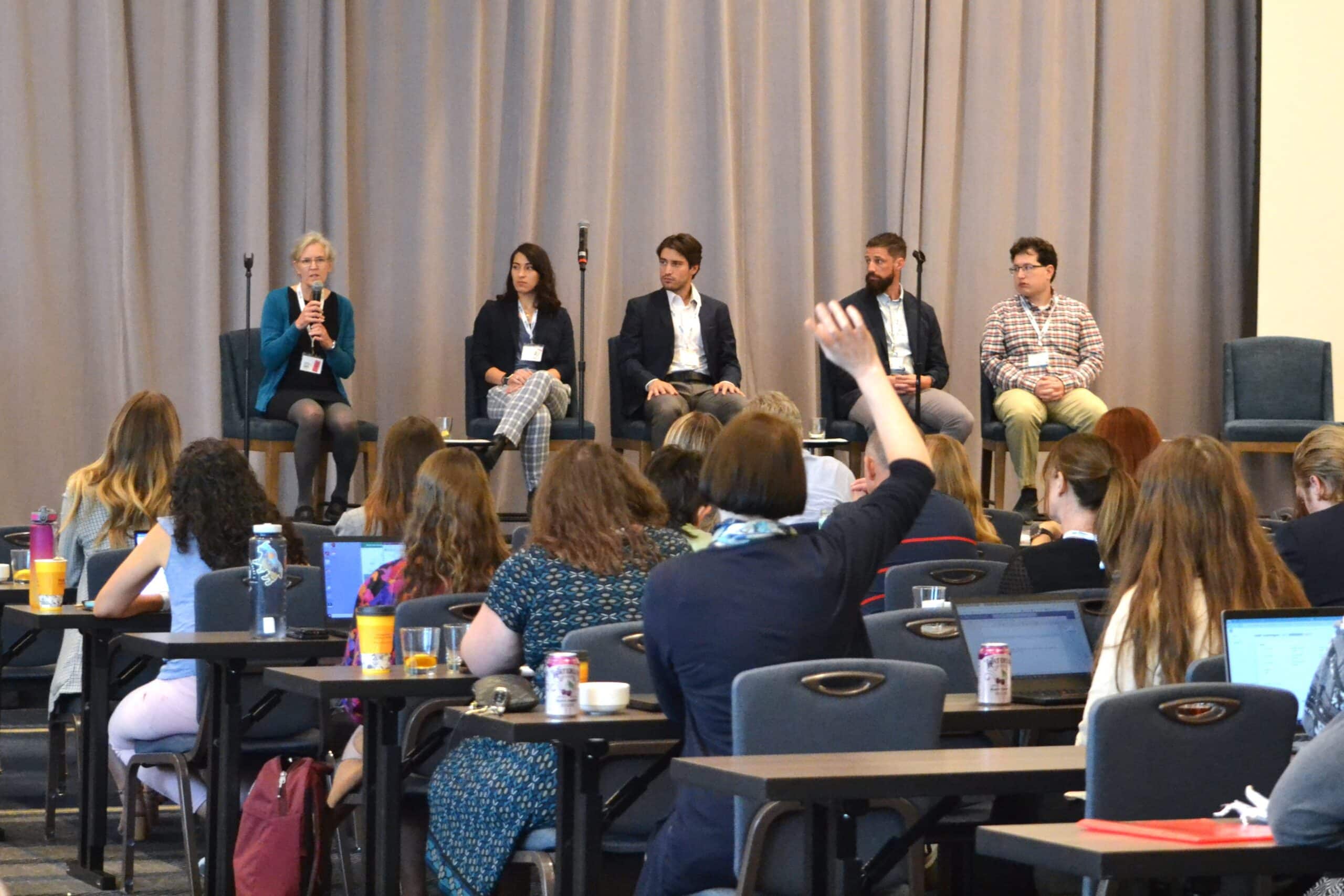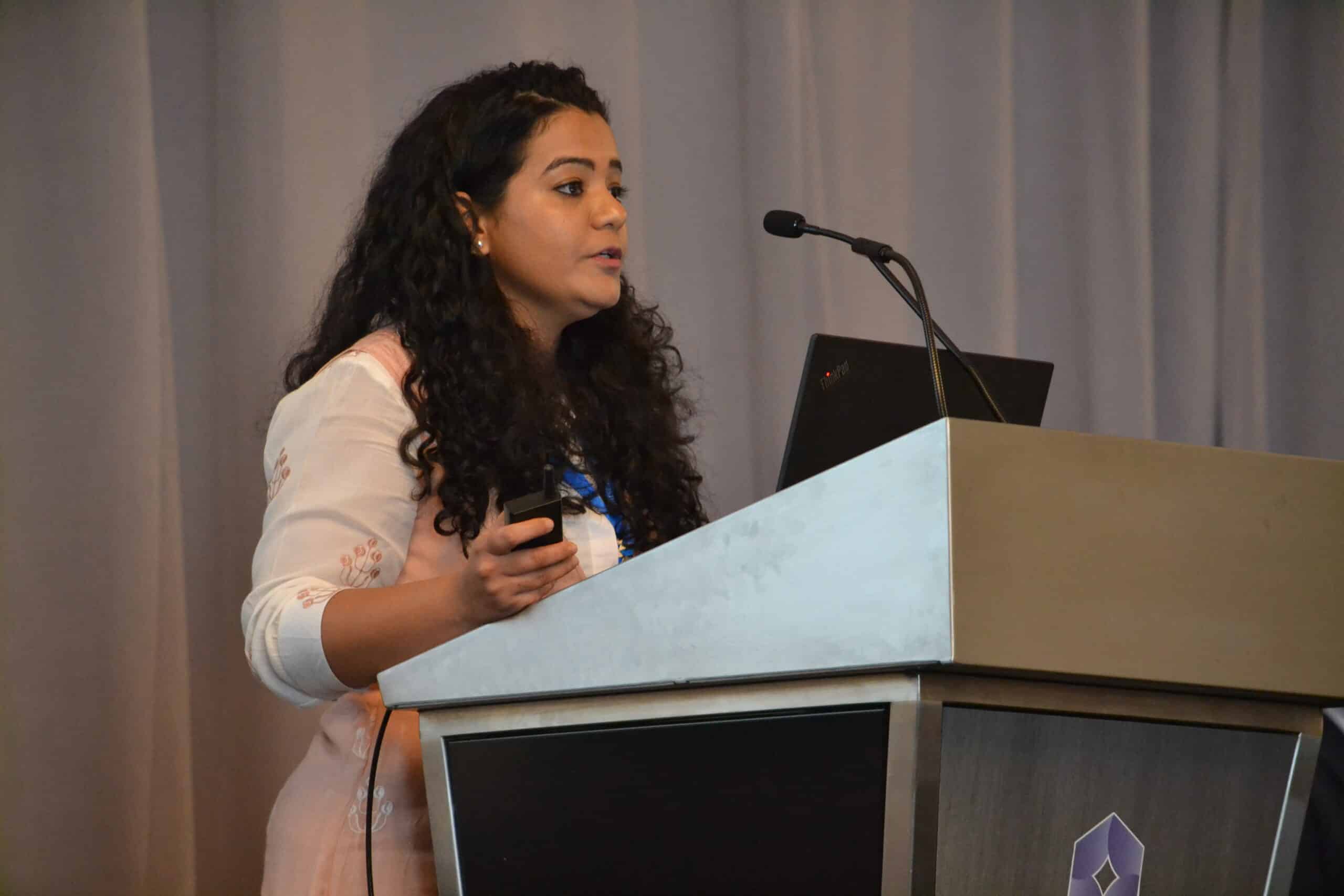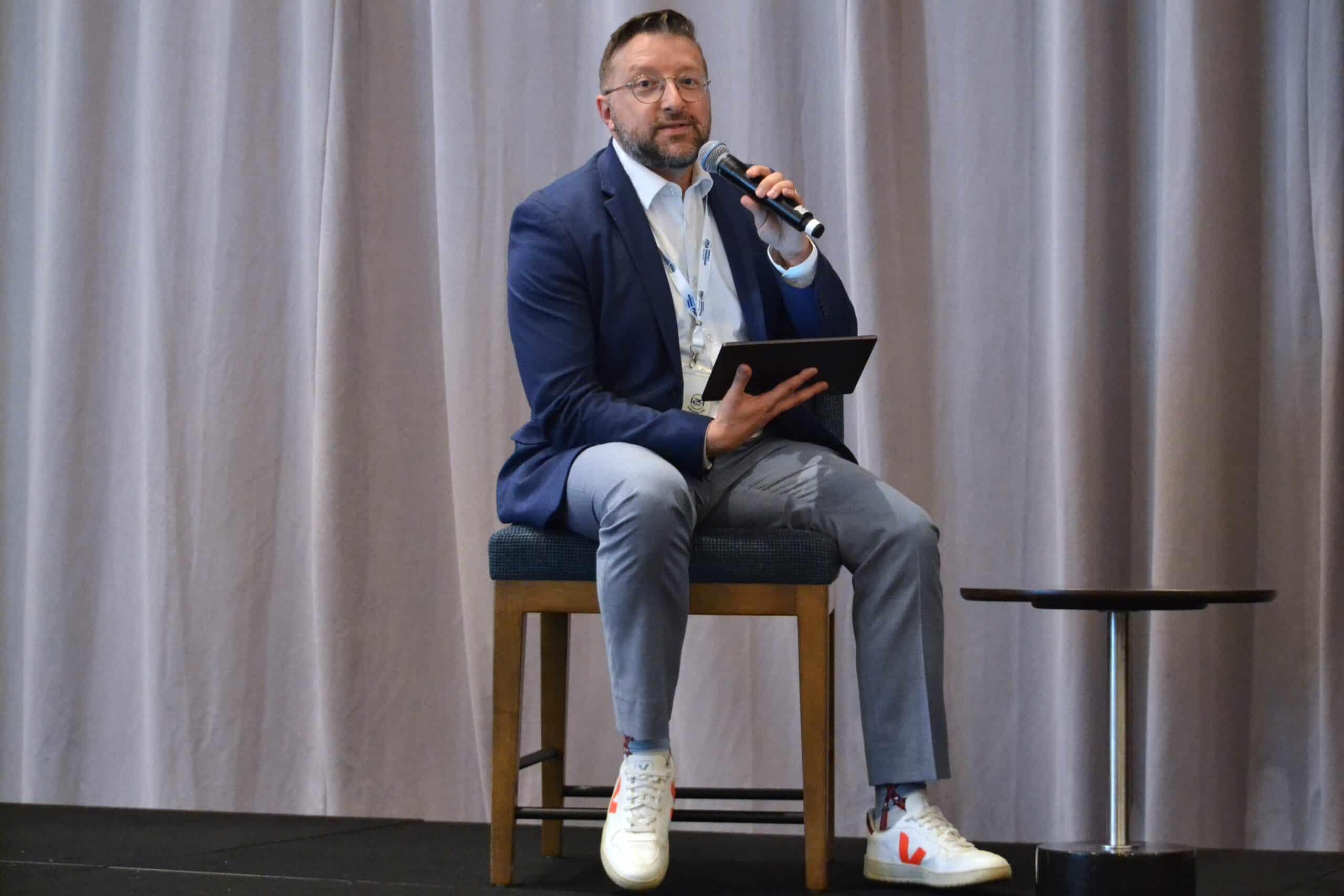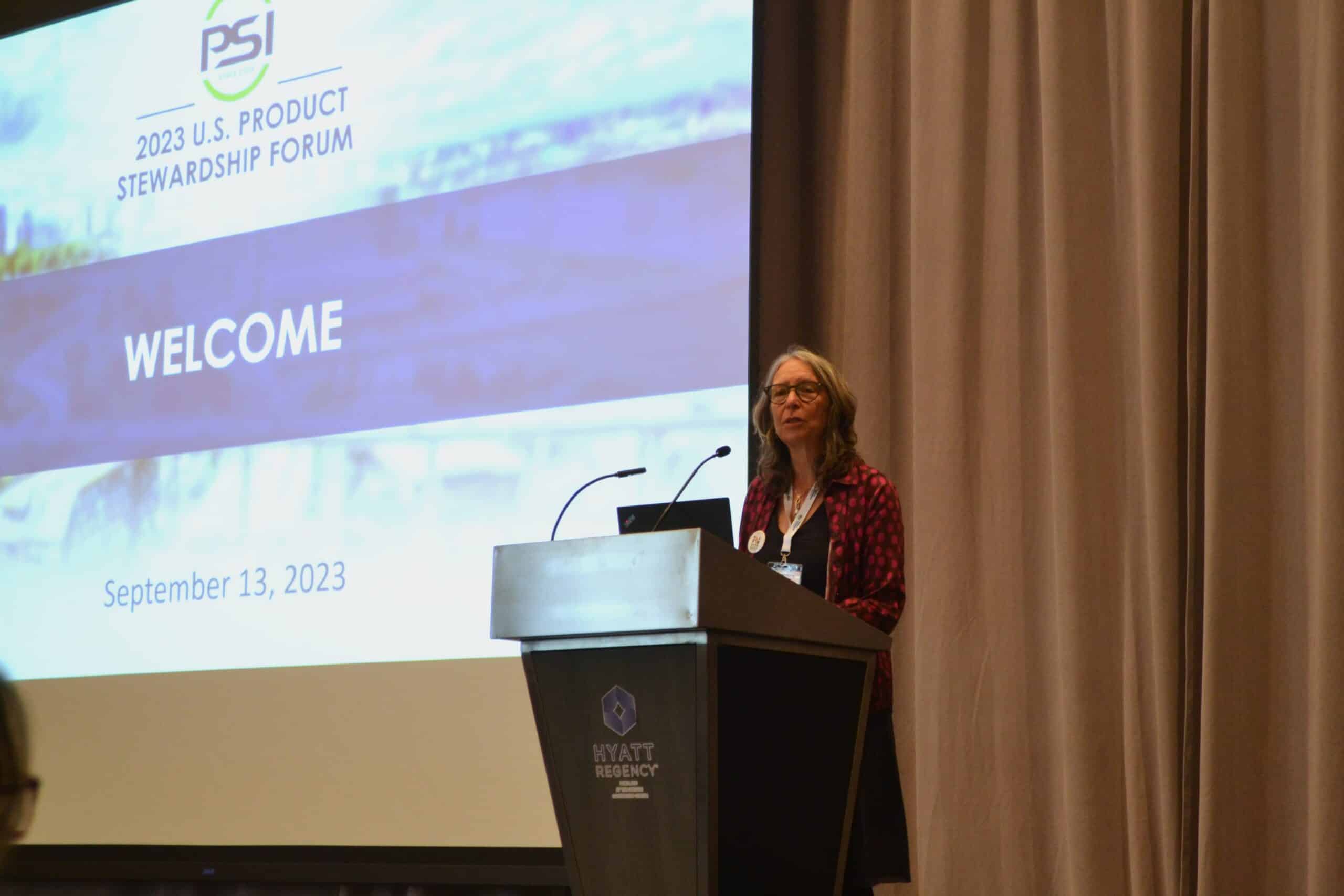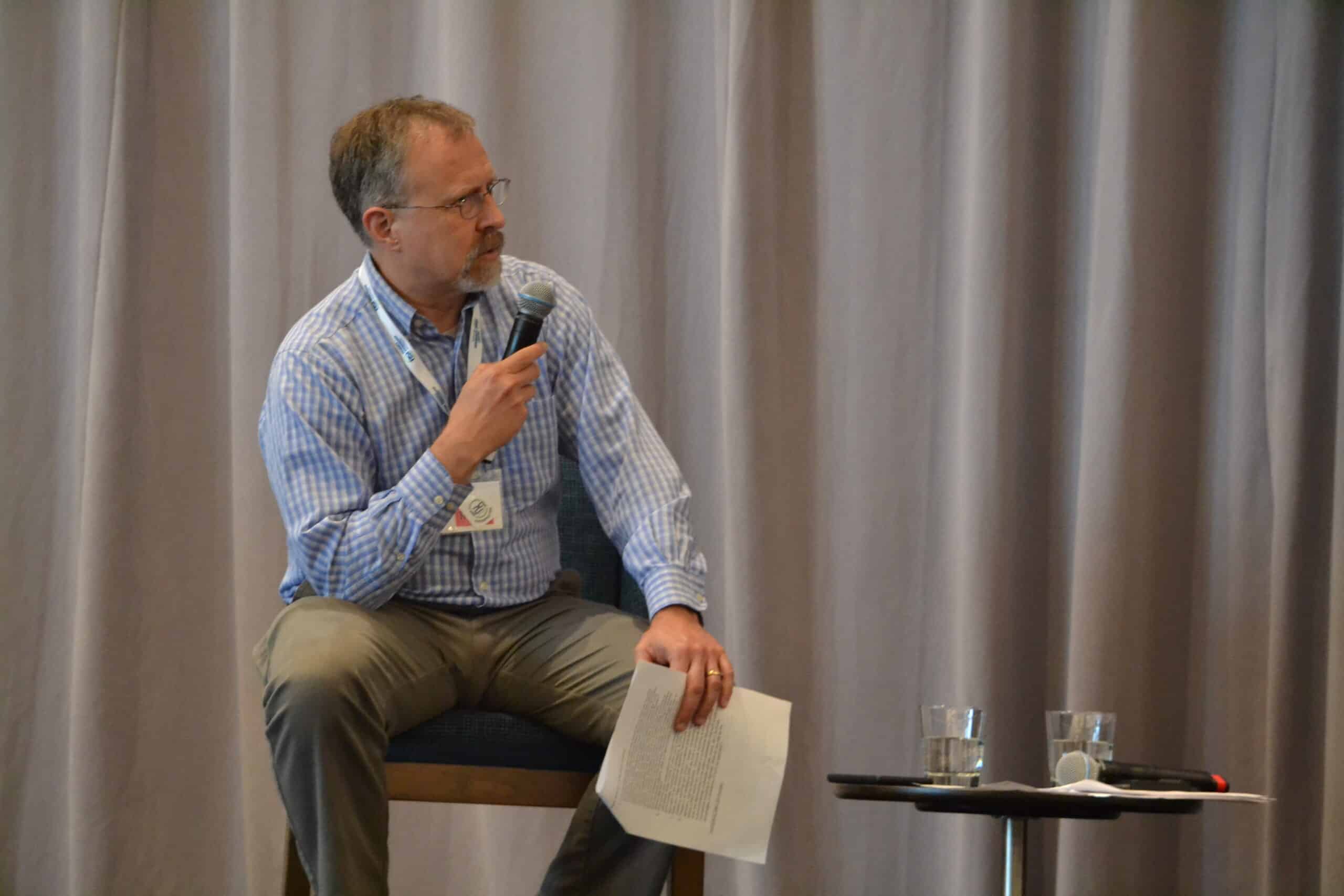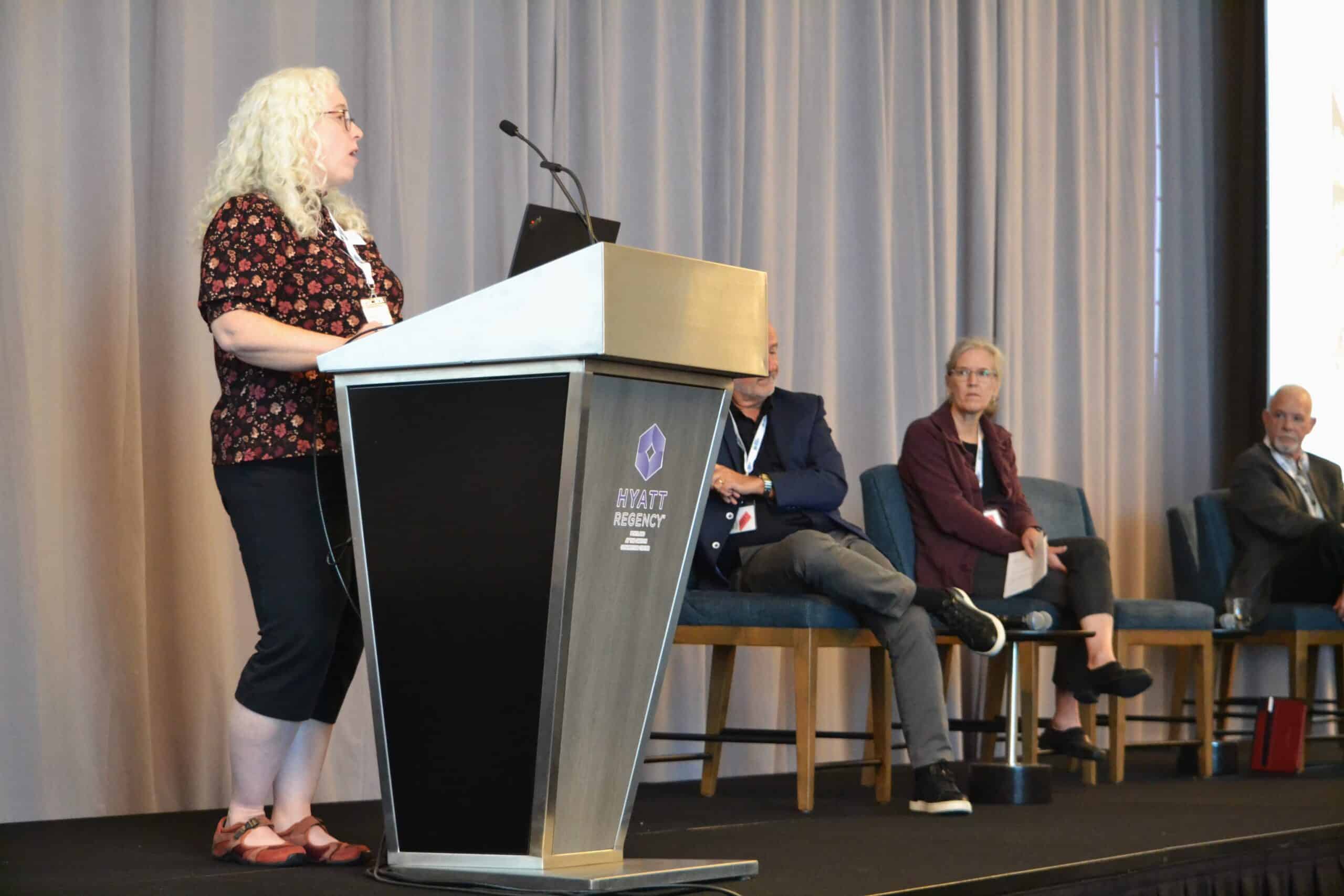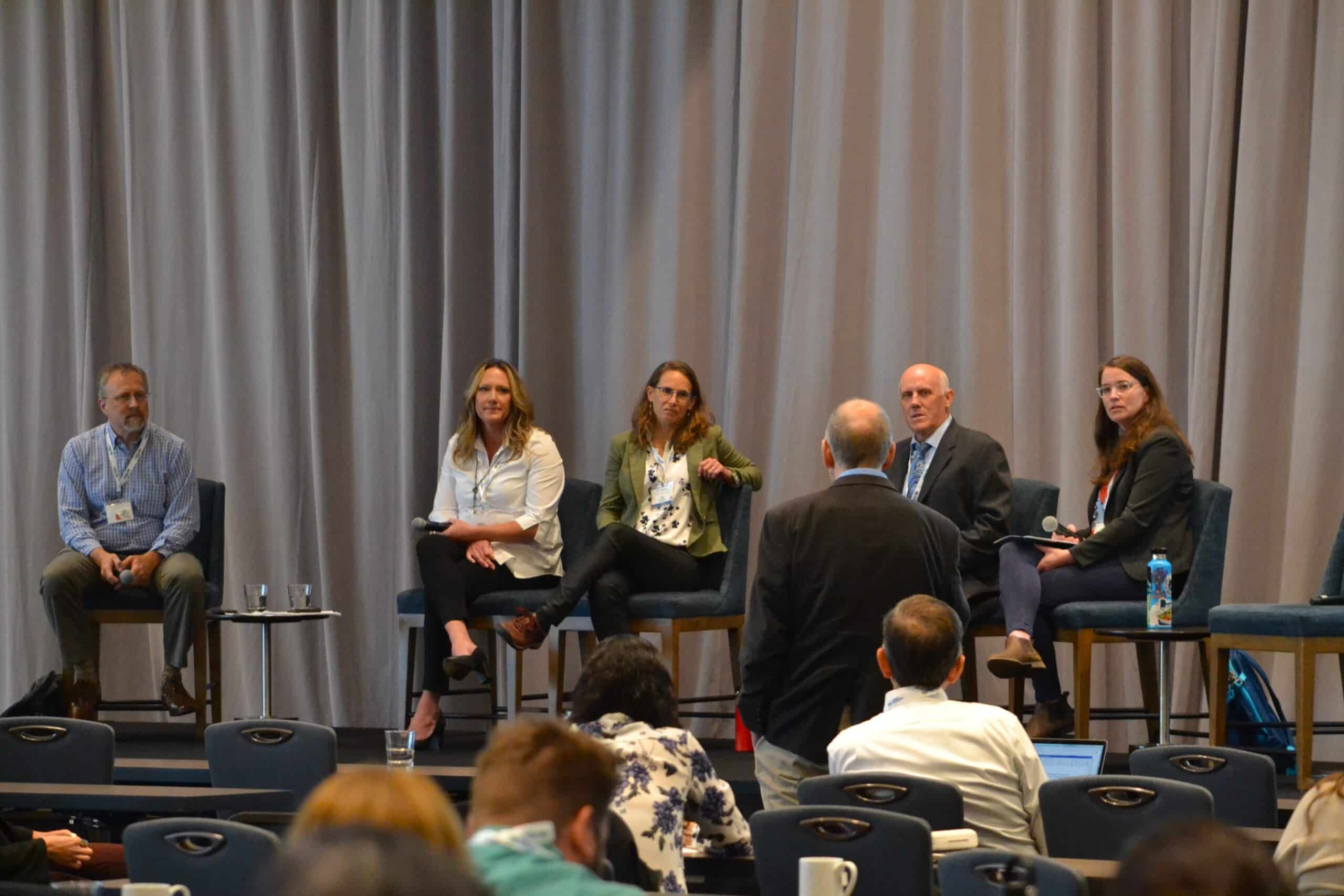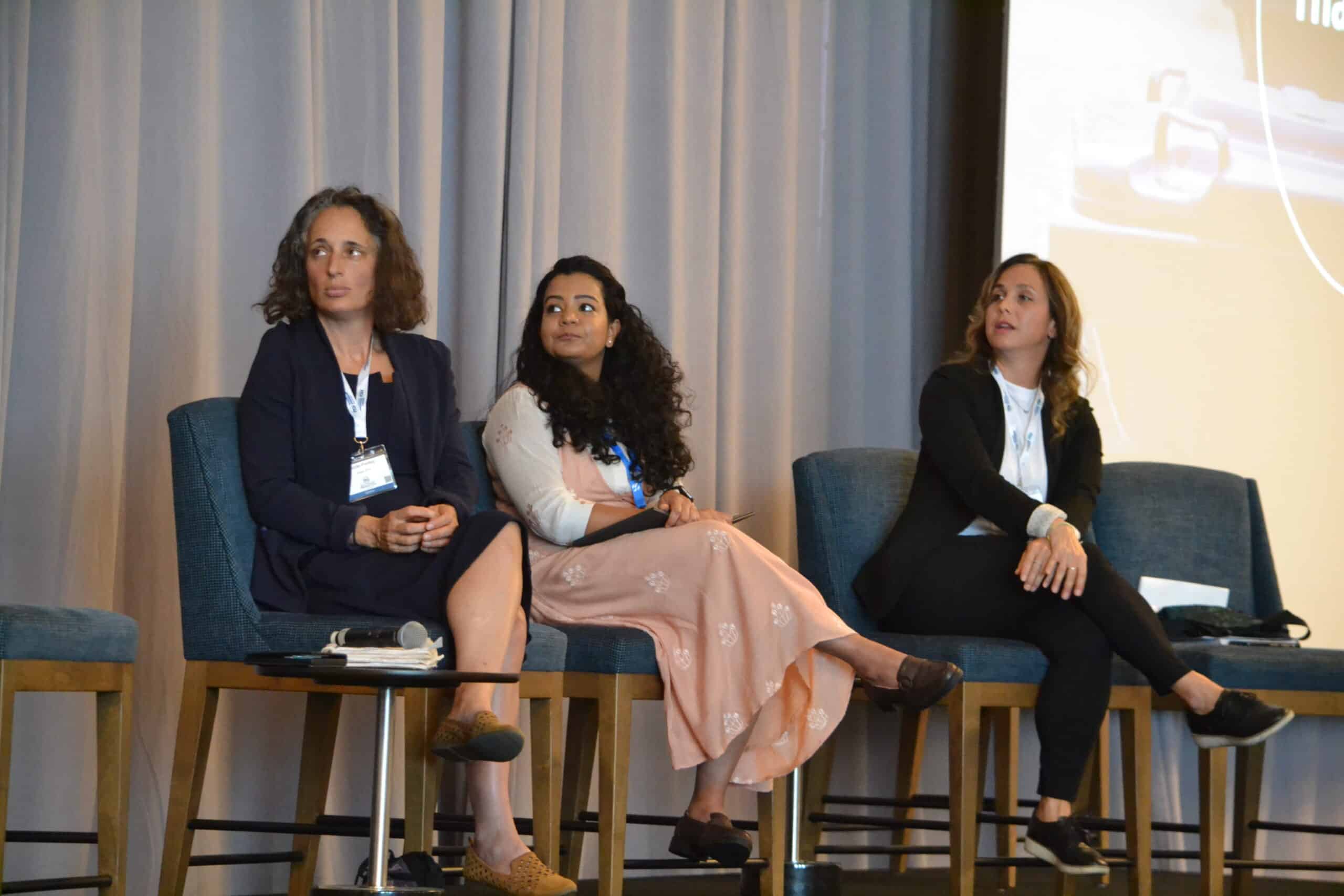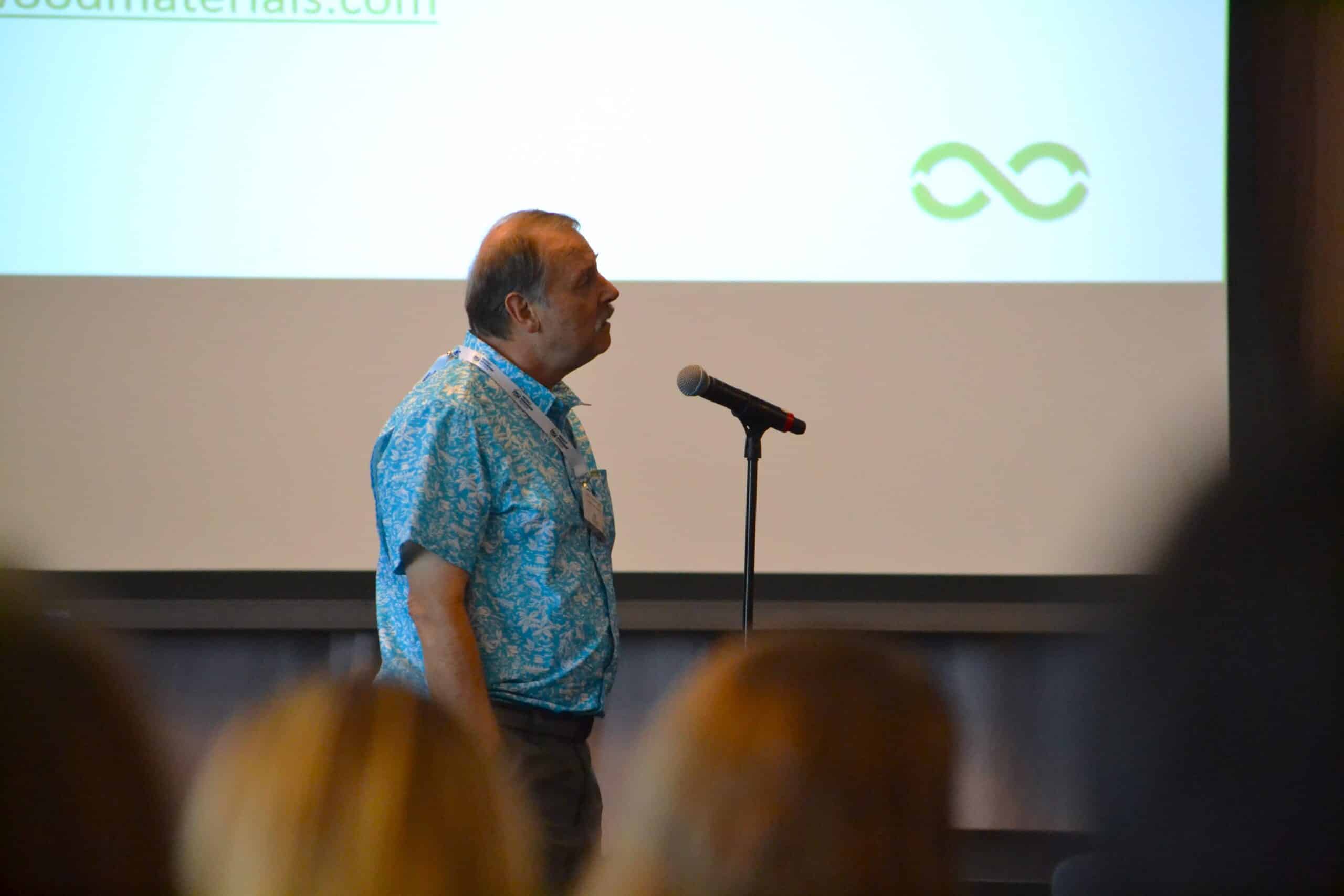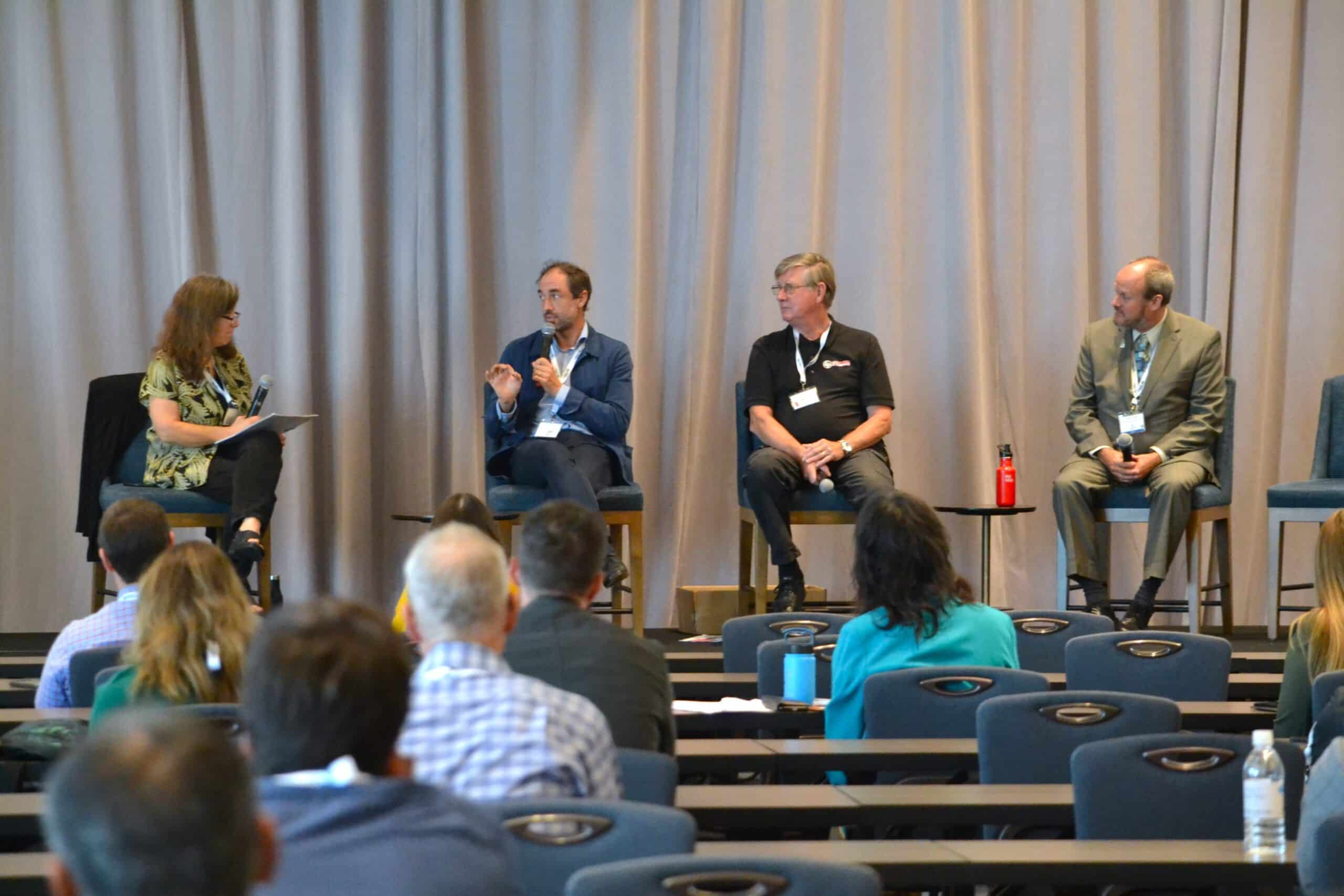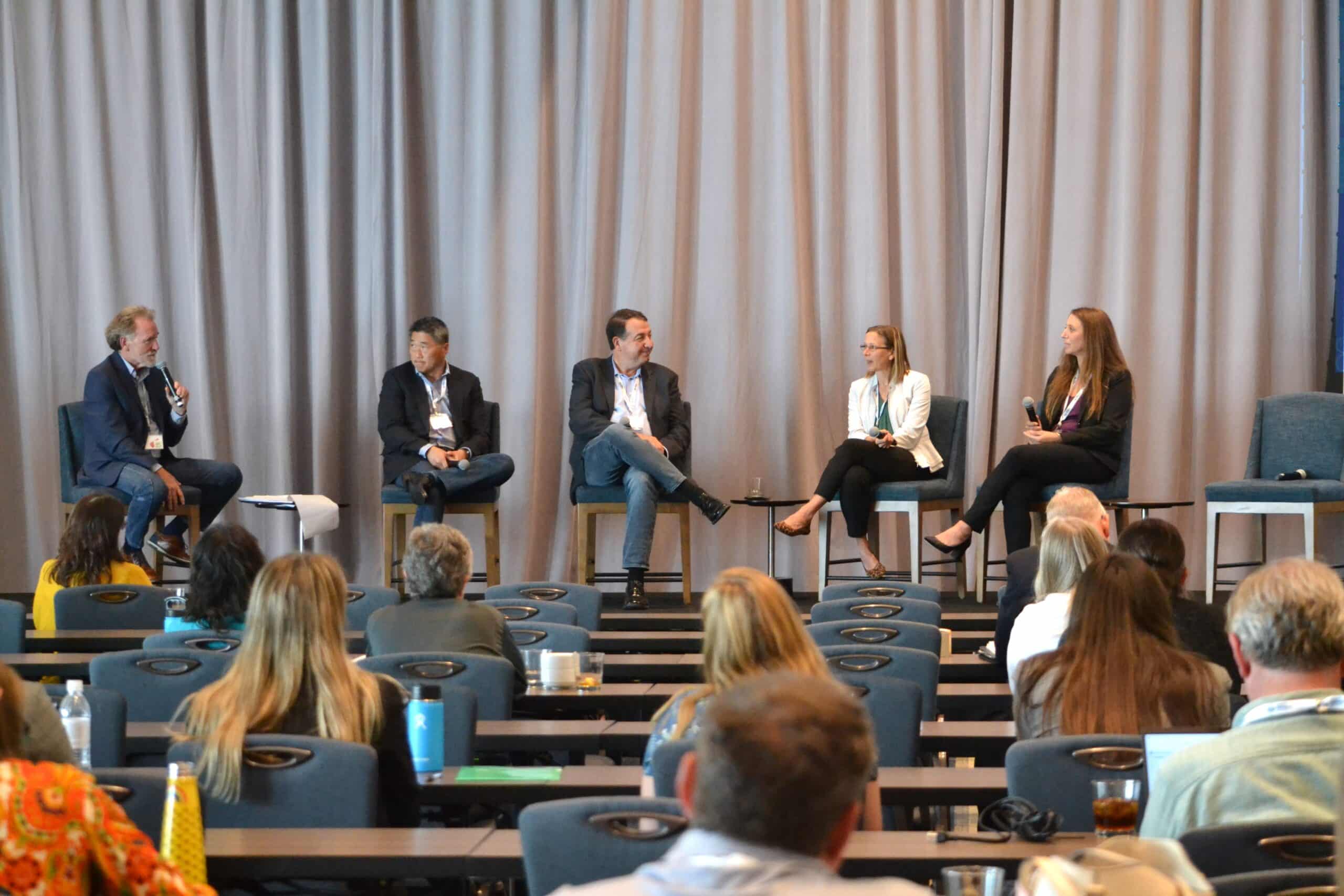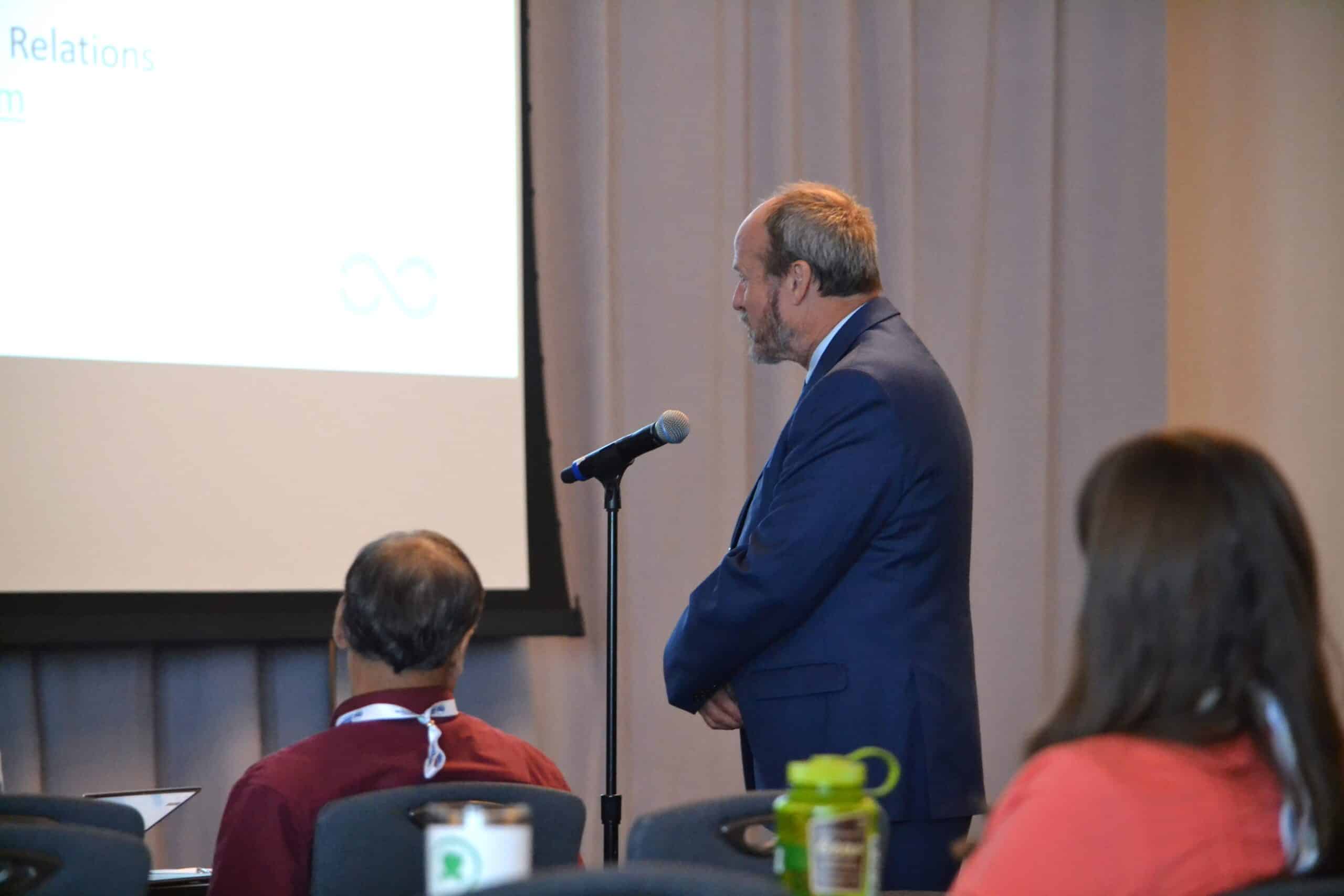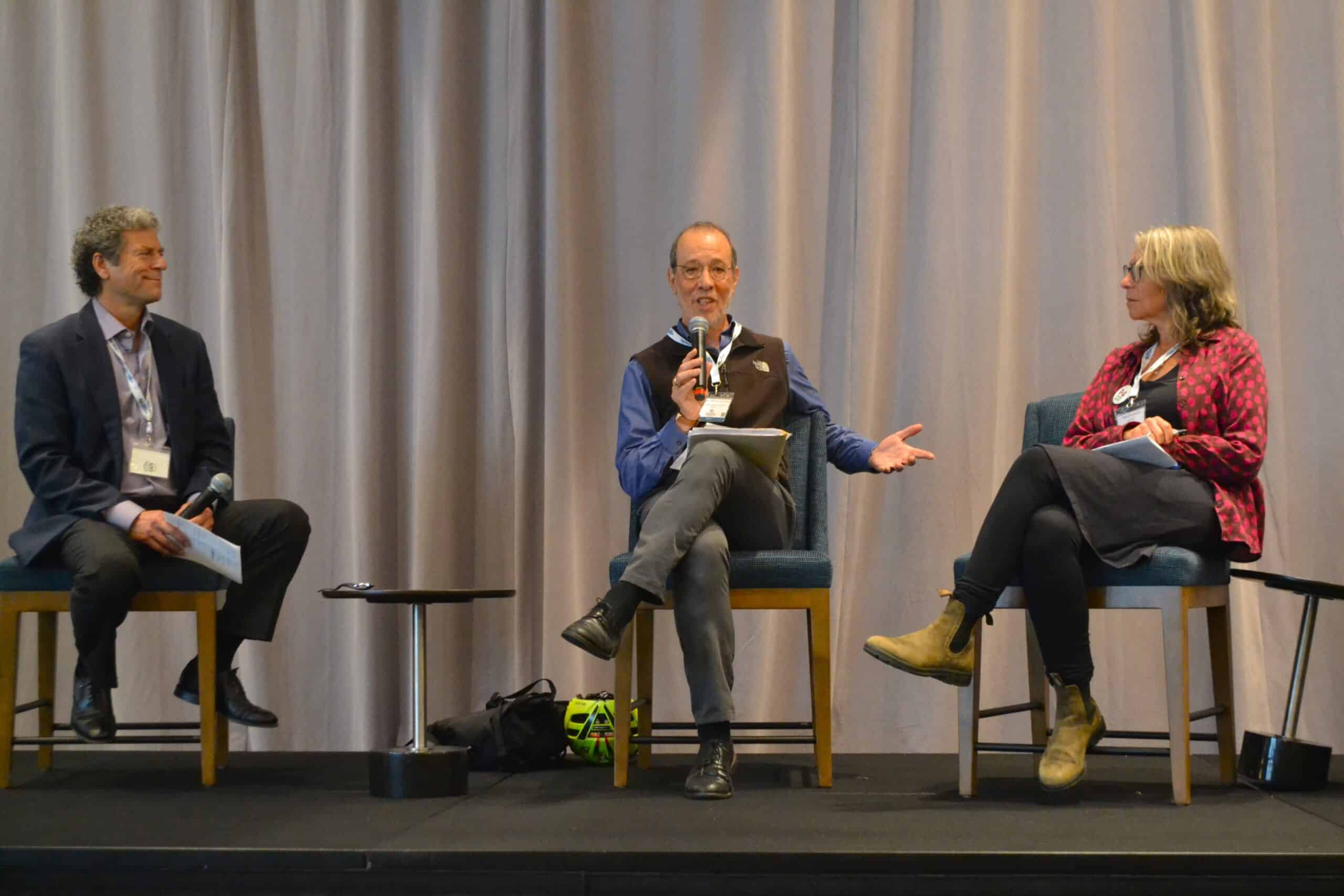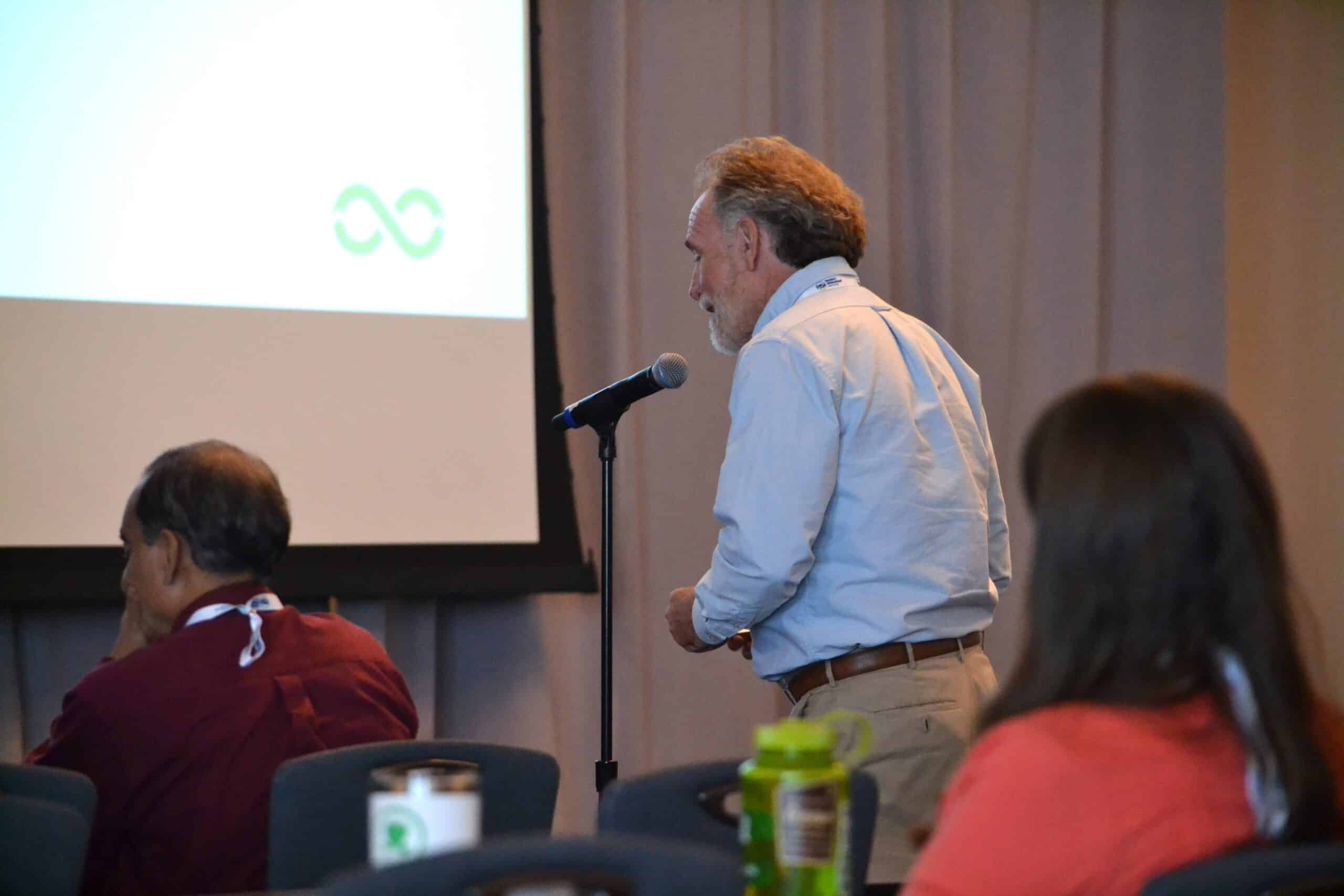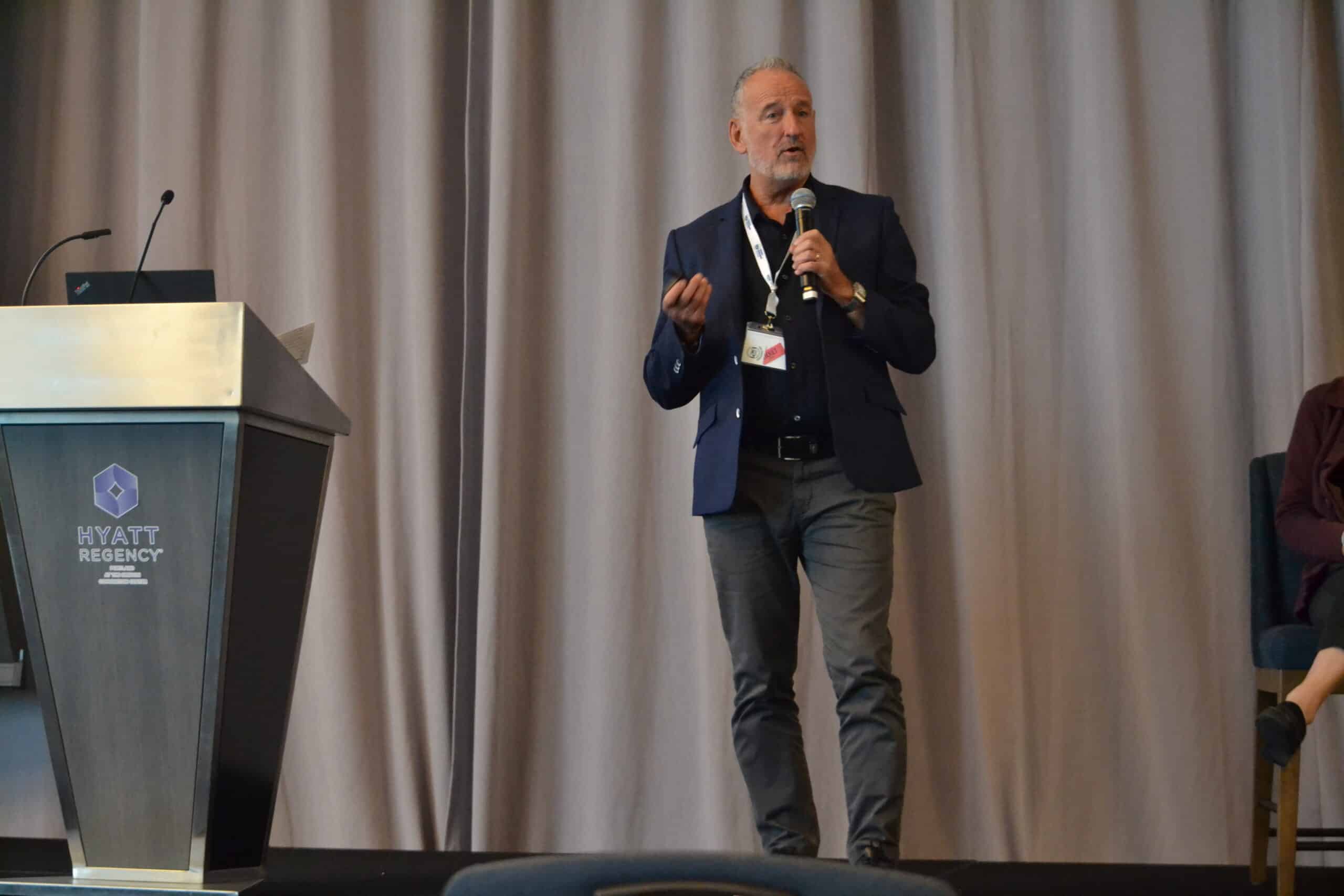by the team at PaintCare, a PSI Partner
For more than a decade, PaintCare has operated manufacturer-led paint stewardship programs in states across the country that make paint recycling convenient. PaintCare is the nonprofit organization created by the paint industry through the American Coatings Association (ACA) to manage the end of life of architectural paint products in states that pass paint stewardship laws. The organization currently operates programs in California, Colorado, Connecticut, District of Columbia, Maine, Minnesota, New York, Oregon, Rhode Island, Vermont, and Washington. A new program in Illinois is currently being planned.
PaintCare organizes year-round drop-off sites conveniently located throughout these states, where households and businesses can bring leftover house paints, stains, and varnishes for recycling. These drop-off sites serve a community need for easier recycling opportunities and keep paint out of the waste stream. The program currently provides a network of over 2,400 drop-off sites in the states where it operates.
While convenient drop-off sites serve the public day-to-day, PaintCare also alleviates the burden of recycling larger quantities of paint – something that particularly impacts painting professionals. The program offers large volume pickups for anyone with 100 gallons or more of eligible paint. Since PaintCare first launched in 2010, it has arranged nearly 10,000 of these free pickups, making it easy for painting professionals to responsibly dispose of leftover paint, and keep it out of the waste stream.
Overall, PaintCare has collected more than 70 million gallons of paint to date.
“Households and businesses greatly benefit from the PaintCare program,” says Nichole Dorr, Vice President of State Programs at PaintCare. “It’s a common challenge for most homeowners, renters, and painters to have leftover paint with no easy solution in sight. PaintCare offers a convenient way to responsibly manage the end of life of your paint.”
What happens to the paint once it’s dropped off at a drop-off site or hauled away during a large volume pickup? PaintCare works with waste transporters to collect the paint and manage it according to a hierarchy of “highest, best use,” meaning as much as possible is given away as-is, recycled, or put to some other beneficial use. PaintCare recently piloted a series of free paint giveaway events that provided thousands of gallons of leftover paint to communities in California and is considering expanding these to other areas.
The statewide paint stewardship programs are funded by a fee (referred to as the PaintCare fee) which is applied to the purchase price of architectural paint sold in each state. The fee amount is based on container size and varies from one program state to another. It covers all aspects of the program: including paint collection, transportation, processing, and public education. This small fee means that those who purchase and use paint each help ensure a system to manage postconsumer paint.
Learning how PaintCare operates allows for a more robust understanding of how the legislative process informs these state program successes. ACA’s government affairs team expertly navigate the political landscape in potential PaintCare states to form recommendations on possible program states as they forge relationships with lobbyists, stakeholders, and others with involvement in the legislative process.
“The goal is to ensure each paint stewardship law is tailored to the needs of each state, yet consistent at its core,” says Jeremy Jones, Director of Extended Producer Responsibility at ACA. “Lawmakers and governors play a decisive role in shaping bills that become laws. However, we work closely with the wide gamut of stakeholders who can convey from their unique vantage point what becoming the next PaintCare state would mean to them. Everyone has a stake in a well-executed PaintCare program and that’s why it’s so important to build quality relationships up front.”
PaintCare continues to build their network of drop-off sites and works closely with many industry organizations to increase awareness of paint recycling opportunities in program states. For more information about paint recycling, visit PaintCare at www.paintcare.org. To get involved in the legislative effort in the next PaintCare program, email Jeremy Jones at jjones@paint.org.
Earlier this month, over 200 globally recognized experts gathered in Portland, Oregon for PSI’s 12th U.S. Product Stewardship Forum. Speakers presented throughout two days of intensive sessions on a wide range of topics covering the most important trends in producer responsibility policy and programs. While all of the sessions were insightful and high quality, the following notable quotes were made during a few of the top sessions.
Extending Responsibility: Eco-Modulated Fees and Responsible End Markets
“Eco-modulation must go beyond incentives, it is about making sure the fee structure reflects the real costs of managing the packaging material and its impact in the value chain.”
Genevieve Dionne, Éco Enterprise Quebec
“Eco-modulation works, period. But it could be gentler, and it could be less complicated for the producers and other market players.”
Gauravi Saini, Reclay StewardEdge
Perspectives on Plastic Recycling – From Mechanical to Chemical
“Mechanical and chemical recycling need to be complementary solutions. The complexities of plastic waste require both to deliver a truly circular economy”
Maranda Demuth, Eastman
“We need to have a robust conversation on whether chemical recycling is worth its environmental impacts.”
Celeste Meiffren-Swango, Environment Oregon
The PRO’s Role in the Circular Economy
“Having a not-for-profit producer-governed organization that supports producers in meeting their EPR commitments ensures efficient and effective recycling systems are in place where plastics and other packaging materials are collected, recycled, and returned back to producers for use as recycled content.”
Allen Langdon, Circular Materials
“We are working with local governments and recyclers to determine how to effectively support recycling systems.”
Shane Buckingham, Circular Action Alliance
“The hallmark of successful systems is a focus on the goals and the desired outcomes.”
Leslie Huska, GreenDot North America
Packaging EPR Implementation in the United States
“The Oregon law prioritizes sustainability above circularity. There is potential for these ideas to be in conflict and the Oregon law aims to achieve broader sustainability objectives. If we pursue circularity in a narrow way and just focus on recycling and composting, there might be some unintended outcomes.”
David Allaway, Oregon Department of Environmental Quality
“In California, we are focused on the reduction of plastic pollution and overall production of packaging materials in the state. The California law requires that 100% of packaging sold into the state of California is either recyclable or compostable, by 2032.”
Rachel Machi Wagoner, CalRecycle
KEY TAKEAWAYS
Throughout the rich and diverse discussions at the conference, the following important issues were highlighted as they are becoming increasingly important in the field of EPR.
- Policy Harmonization: All stakeholders expressed the importance of identifying common elements of all EPR bills and laws. Policy harmonization is not only crucial for increasing the efficiency of existing and future programs, but also for ensuring alignment across jurisdictions, reducing consumer confusion, and enabling effective program comparison.
- Measuring Success: Congruent with the need for policy harmonization is the need to define how the success of a program or policy is measured. It is essential to identify what needs to be measured, ensure that data collection is accurate and consistent, and provide all stakeholders with relevant information.
- Producer Presence: As the field of EPR continues to advance, it will be necessary to directly involve producers, along with associations, in the conversation. Without representation from key producers, a valuable perspective on the field is lost. The interest of individual producers and their associations are essential to advancing effective EPR policy.
WHAT ARE PEOPLE SAYING ABOUT THE CONFERENCE?
We are shifting into a new phase of the EPR movement with rapid success and the need for engaged stakeholders and a highly knowledgeable community. The PSI Forum will continue to be a space for those eager to learn and contribute as we lead this movement forward. Here are some thoughts from 2023 PSI Forum attendees on the importance of event:
“PSI did it again, assembling the world’s experts on EPR (those actually engaged in making it happen) and presenting two days of rich, productive conversations about the current state of affairs in the U.S., Canada and Europe and where things are headed, on a wide variety of products as well as packaging. Kudos to PSI for being able to bring such diverse parties to the conference in a series of stimulating panels. PSI continues to be THE place to go for expertise, ability to bridge government, business and advocacy groups, and the many connections, contacts and synergies possible.”
Dave Galvin, former PSI board president
“PSI’s conference enables State Environmental Staff, PROs, Recyclers and NGOs to collaborate on EPR. With the growth of EPR, this conference is becoming essential to those involved with environmental policy and execution.”
David Bender, CEO Circular Polymers by Ascend
“Excellent forum about all aspects around EPR. Competent speakers, lively discussions about the hot topics, engaged participants, perfect networking. The place to go in the US!”
Joachim Quoden, Managing Director EXPRA
“The 2023 US Product Stewardship Forum provided a wonderful opportunity to connect and have meaningful and in-depth conversations with others working to find solutions to how we can move the solid waste industry from a linear (extract, make, use, dispose) system to a more circular economy. Learning from each other and working together, we can take actions that have long-term positive results for our customers and the environment!”
Susan Fife-Ferris, Seattle Public Utilities, Washington
“Fun, productive, and a truly unique meeting of the minds from across the globe!”
Maya Buelow, Lane County Waste Management, Oregon
“Scott and the PSI team put together an excellent event. The structure was just right to allow attendees to choose which sessions they wanted to attend without having to choose from overlapping sessions. Looking forward to the next Forum two years from now!”
Doug Kobold, California Product Stewardship Council
CONTINUE THIS WORK WITH US
PSI will continue to lead these conversations with other experts through our webinar series this fall. Our webinars will cover a range of pressing issues and we look forward to your participation. For more information, sign up for our monthly newsletter.
BOOK NOW AVAILABLE
Scott Cassel, CEO and Founder of the Product Stewardship Institute, debuted his recently published book, Perspectives on Product Stewardship: Navigating an extended producer responsibility path to a circular economy, at the 2023 U.S. Product Stewardship Forum. This book is a must-read for all EPR professionals. Click here to purchase your copy! If you are a PSI Member or Partner, contact info@productstewardship.us for 30% discount.
PHOTOS FROM THE FORUM:
by Jim Asali, President and CEO of the Pack Green Coalition, www.packgreen.org
In an era dominated by ominous news of the impacts of climate change—most recently evidenced by devastating fires in Maui—and a legitimate plastic pollution crisis that appears to have no end, Pack Green is here to offer a bit of encouragement. Sustainable packaging innovation is on the rise and offers smart alternatives to single-use plastics that far too often clog our landfills and pervade our lands and waterways. In 2023, we have happily taken note of environmentally-friendly packaging advancement across three major sectors: consumer packaged goods, produce, and beverages. Here, we highlight promising developments in each of these spaces:
CPG
American toy manufacturer Mattel—the creator of Barbie—has publicly pledged to (1) achieve 100% recycled, recyclable, or bio-based plastic materials in its products and packaging by 2030, (2) maintain 95% recycled or Forest Stewardship Council (FSC)-certified content in the paper and wood fiber used in its products and packaging, and (3) reduce plastic packaging by 25% per product by 2030. In addition to its packaging and materials pledges, the company has also started the Mattel Playback scheme, which seeks to keep the toys and materials in circulation longer through recycling. The program currently accepts Barbie, Fisher-Price, Matchbox and MEGA toys for recycling, and is available in the US, Canada, France, Germany and the UK.
LEGO—the world’s leading toy manufacturer—announced in its annual results that it has begun to transition to paper-based bags in LEGO boxes, putting it on track to make all of its packaging from more sustainable sources by the end of 2025. In its factories, it has continued to invest in reducing waste, operating more energy efficiently, and expanding production and use of solar energy.
As part of its commitment to sustainability, consumer goods giant Procter & Gamble has pledged by 2030 to reduce its use of virgin petroleum plastic in its packaging by 50%. As part of this process P&G has invested in technology to improve the efficacy of post-consumer recycled content to more closely match that of virgin materials.
Produce
Paper companies have long embraced the inherent advantages of fiber-based packaging over plastic, even as the latter has sought to make inroads into grocery and produce protection. Two of these makers of sustainable paper packaging solutions are Georgia-based WestRock and Graphic Packaging International. WestRock creates packaging for several industries, including food, beverage, healthcare, retail, beauty, and more. Its EverGrow® Collection includes punnets, tills, totes, and trays produced specifically for growers, distributors, and retail produce brands. EverGrow® is made from renewable paperboard and allows for curbside recyclability when emptied and flattened, offering an alternative for hard-to-recycle plastics.
The same goes for the ProducePack™ line of fresh produce packaging from Graphic Packaging International. ProducePack™ is a line of paper-based fruit packaging that offers a variety of sustainable, shelf-ready solutions for fresh fruit and vegetables. In addition, the ProducePack™ Punnet includes a wide range of applications to deliver an effective alternative to traditional plastic/acetate produce packaging for retailers and producers.
Beverage Containers
Holland, Michigan-based Boxed Water™ is emerging as a leader in the transition away from plastic beverage bottles. Currently, there are roughly 38 billion single-use plastic bottles landing in U.S. landfills and waterways each year, a figure that takes into account the current recycling rate of single use plastic water bottles of around 25%. Boxed Water has sought to address this using simple formula: the least amount of plastic and the most renewable materials, the better the package. Its box is FSC-certified and 92% plant-based, made from paperboard and paper waste. The FSC- and ISCC-certified water box cap is made of pine tree waste, harvested responsibly from Nordic forests. The result is a low carbon-impact product that is also 100% reusable and recyclable.
In the 2010s a consortium of packaging, bottling and beverage manufacturers—including the Carlsberg Group—worked together to create an innovative paper bottle. The result was PABOCO (Paper Bottling Company), which has developed bio-based bottle prototypes in Europe and has invited additional partners to join in its efforts, including Coca-Cola, L’Oreal, Pernod Ricard, The Absolut Company, and Procter & Gamble.
In yet another encouraging development, American food and beverage company PepsiCo has unveiled its plans to replace plastic rings on beverage multipacks across the US and Canada with recyclable paper-based designs. In 2022, Coors Light announced that it will globally shift away from plastic rings to cardboard-wrap, a move the company said will save 1.7 million pounds of plastic waste annually by 2025.
Conclusion
While the problem of plastic pollution is multi-faceted and may seem overwhelming, we know that the solution will come down to the basics of reducing virgin output, improving a fractured and anemic recycling system, and increasing re-use as we move away from our throwaway culture. Only through a concerted effort to combine the foregoing dynamics will we be able to achieve circularity and ameliorate the adverse impacts environmental, health, and aesthetic impacts of our drastic overuse of plastic packaging. The advent of the products and innovations described in this post gives us reason to believe we are beginning to make progress.
by Scott Cassel, CEO and Founder
PSI is excited to announce our partnership with GreenDot, a full-circle EPR management and recycling solutions provider in Europe and North America. GreenDot was founded in Germany in 1990 under the name Der Grüne Punkt (The Green Dot). There, it created the world’s first nationwide EPR program for household packaging, including hard-to-recycle plastics like flexible films. Der Grüne Punkt continues to design and operate every aspect of EPR management—including collection, sortation, and recycling—and now services more than 80 million people. The German EPR packaging model is considered the forerunner of the European Union’s current regulatory structure. It has inspired more than 30 packaging recovery organizations in Europe over the last 30 years.
In August of 2022, Der Grüne Punkt was purchased by Circular Resources and rebranded as Green Dot Global, which oversees a growing list of international affiliates that includes operations in North America and Europe. The company plans to expand operations into additional countries around the world with the aim of providing multinational consumer product brands solutions to meet their global recycling and recycled content targets.
GreenDot currently serves over 100,000 customers with a suite of EPR management services—including guidance on EPR compliance obligations; transparent tracking of collection, sorting, and recycling volumes; documentation of CO2 equivalent reduction through recycling; and certification of recycled content in plastic packaging. Their solutions aim to accelerate plastics circularity, even for challenging materials like flexible films. Annually, GreenDot recovers more than one million tons of household packaging waste and processes over 70,000 tons of post-consumer plastic packaging and LDPE. GreenDot’s recycling operations save over 600,000 tons of CO2 equivalents annually. GreenDot’s comprehensive approach—built on a passion for measurable change and problem-solving—helped drive Germany’s plastic packaging recycling rate from 3% in 1991 to over 60% today.
Now, they are bringing their decades of hands-on, real-life expertise to improve recycling in the United States, where the plastics recycling rate lingers under 10%. GreenDot will leverage its experience and technologies to develop effective, community-tailored collection and recycling solutions that benefit brand companies and make a lasting impact on underserved markets in the U.S.
***
GreenDot is a Platinum Sponsor of the 2023 U.S. Product Stewardship Forum. We hope you’ll join them in Portland, Oregon September 11-14, where you can meet some of their leadership team members in person: Leslie Hushka, Managing Director of Green Dot North America, and Chief Sustainability Officer of Green Dot Global Group; Geoffrey Inch, Vice President, Sustainability & Policy; J.J. Rawlinson, Sustainability Director.
Contact info@green-dot.us to connect with Green Dot North America leadership.
by the team at PaintCare, a PSI Partner
PaintCare, the nonprofit organization that plans and operates paint stewardship programs in states that pass the paint stewardship law, is proud to celebrate one year in New York. The New York PaintCare program launched on May 1, 2022, and has been providing more convenient paint recycling in the state over the past year. To date, PaintCare has collected 727,000 gallons of paint for recycling in the state.
PaintCare operates programs in 10 additional states and jurisdictions including CA, CO, CT, DC, ME, MN, OR, RI, VT, and WA. In these states, paint recycling is made more convenient for households, businesses, contractors, and others with unwanted, leftover paint. In New York, there are 285 drop-off sites open year-round for paint recycling, and 2,450 drop-off sites across all program states. This resource benefits all community members and is available across the state, including in New York City.
To find a drop-off site near you, use PaintCare’s drop-off site locator to find the most convenient options to recycle your unwanted paint. PaintCare also offers a large volume pick-up service (LVP) for anyone with 100 gallons or more of paint, measured by container size, not liquid volume. These resources are available to anyone in all PaintCare states who wish to responsibly recycle leftover paint.
PaintCare keeps paint out of the waste stream by offering convenient ways to manage it by offering tips on using up leftover paint and providing drop-off sites and events in which communities and businesses can drop off unwanted paint. To date, PaintCare has collected over 64 million gallons of paint for recycling across the country.
For more information about paint recycling and to contact your local representative, visit PaintCare online at www.paintcare.org or call them at (855) PAINT-09.
Follow PaintCare on social media @WeRecyclePaint on Facebook and Instagram!
by the team at GDB International, a PSI Partner
“The Earth is not a gift from our parents, it’s a loan from our children.” – Mahatma Gandhi.
Last year, Earth Overshoot Day fell on July 28. Earth Overshoot Day marks the date when humanity has used all the biological resources that Earth regenerates during the entire year. We know paint and coatings manufacturing is resource-intensive, so over 25 years ago, GDB Paint & Coatings set out to design several solutions to promote a net-zero paint industry.
Put simply, GDB gives new life to leftover and discarded paint. These solutions include taking a variety of materials that would otherwise be discarded as waste and reusing them in a sustainable manner.
Why is recycling important?
- Recycling a gallon of paint can save the energy equivalent of a gallon of gasoline. Recycling paint needs much less energy than extracting and processing raw materials, as well as manufacturing new paint (PaintCare).
- Paint recycling saves the use of natural resources, such as minerals and petroleum. Recycling one gallon of paint can conserve up to 8 pounds of virgin raw materials (US Environmental Protection Agency).
Where does the leftover paint come from?
- The process begins by considering painters and DIY customers, who typically have leftover paint from domestic and industrial projects. This leftover paint makes up approximately 10% of the total paint used in the US annually.
- Some of this leftover paint comes to PaintCare, a non-profit product stewardship organization created by the American Coatings Association. PaintCare works across US states that pass paint stewardship laws. The program has been established in California, Colorado, Connecticut, the District of Columbia, Maine, Minnesota, Rhode Island, Vermont and, most recently, Washington and New York. GDB is a PaintCare partner and receives some of the collected paint, where it is sorted, processed and remanufactured.
- Paint retailers and hardware stores often need to dispose of damaged products and mistints, which would also be considered waste.
- Paint manufacturers also contribute to this waste with their leftover materials. These materials include paint that isn’t quite the right tint or quality and leftover materials from the paint production process. The production process generates “wash water” used to clean mixing tanks and pipes, which contains residual pigments, resins and solvents.
- Lastly, raw material manufacturers may have stock that is too old to use or is not the right specification.
What does GDB do?
- GDB has a long track record of reusing pre-consumer, post-consumer and post-industrial materials, which includes those aforementioned materials. The company cleans out any impurities and carefully analyses and blends the materials together to create new high-quality, affordable and eco-friendly paint.
What’s the impact?
- In 2022, GDB reused paint and other materials leftover from consumers, retailers and paint manufacturers to make 3 million gallons of recycled paint – enough to paint all the homes in Salt Lake City. This achievement has significant environmental implications, as it not only reduces the amount of waste going to landfills but also saves resources by reusing the materials that would otherwise be wasted.
- In addition to the environmental benefits, this process also has economic benefits. By reusing leftover materials, GDB can reduce the costs of production, which translates to lower prices for the consumers. Furthermore, it creates a sustainable business model, providing a competitive edge in the market by positioning the company as an environmentally responsible and innovative player in the paint industry.
GDB reprocesses dozens of truckloads of leftover and discarded paint every day. It has been a success story, not only for the company but also for the environment. The company’s dedication to sustainable practices has proven that eco-friendliness and economic prosperity can go hand in hand. It sets an example for other companies in the industry to follow and encourages consumers to make conscious choices in selecting products that have a positive impact on the environment.
Get in touch!
- Come see us at the 2023 Florida Chapter NAHMMA Workshop in Daytona Beach, Florida on Monday May 15 thru Thursday May 18.
- Write to us at hello@gdbinternational.com
- Connect with us on LinkedIn
by the team at Covanta, a PSI Partner
In the United States, we still bury more than half of our waste in landfills, losing valuable resources and harming the environment in the process as those materials release exorbitant amounts of methane into the atmosphere and contaminants into our soil and waterways.
On the surface, sending waste to landfills may seem to be the easiest and most economical route to waste disposal. But aside from the hidden liabilities and harmful effects, the upfront cost of landfill disposal is steadily rising as landfill space becomes ever more scarce. According to the Environmental Research & Education Foundation, landfill tipping fees increased annually on average between 5% and 7% — measurements taken before the sharp rise in supply chain issues and inflation.
By adopting zero waste-to-landfill processes and policies in order to divert waste away from landfills, companies can do more to preserve the environment and bolster their bottom lines: They can reduce logistics expenses and landfill fees, improve environmental compliance and reap positive public relations benefits.
This can all be accomplished by reducing the amount of waste your business generates, amplifying your recycling efforts, and finding sustainable solutions that extract value from the materials that remain.
Visit Covanta’s blog to learn the four steps that can help companies create an effective zero waste-to-landfill plan.
by Rachel Lincoln Sarnoff, Marketing and Communications Director
PSI CEO and Founder Scott Cassel recently joined two expert panelists for a webinar discussion of EPR that was hosted by the U.S. Environmental Protection Agency’s Trash Free Waters program.
PSI and US EPA have a long history. Beginning in 2003, we worked together to facilitate a multi-stakeholder dialogue — which included industry, government, and recycled paint manufacturers — and to develop a legislative model for paint EPR.
The mission of the Trash Free Waters program is to protect human health, aquatic ecosystems, and the economy by partnering on collaborative solutions to reduce the volume of trash — especially plastic materials — polluting our rivers, lakes, estuaries, and oceans. Because of this, the focus of the discussion was packaging EPR. Scott was joined by Kelly McBee, Circular Economy Senior Coordinator at As You Sow, and Maine State Senator Nicole Grohoski, in a discussion moderated by Kathleen Brady, Vice President of ERG.
Romell Nandi, an Environmental Protection Specialist at US EPA, introduced the discussion of EPR, which was positioned in the webinar description as a powerful tool to realize the mission of Trash Free Waters: “Positively changing consumer behavior, expanding recycling infrastructure, installing trash capture devices in waterways or as part of stormwater conveyance systems and more constitute parts of the solution space – but in and of themselves, these solutions may not be adequate to keep waterways clean. A potentially impactful step that is now being considered and increasingly implemented throughout the United States is Extended Producer Responsibility (EPR).”
The power of packaging EPR was echoed by all three speakers including McBee, who recommended pursuit of a national packaging EPR system — a call to action that Cassel has proposed to US EPA, most recently at a 2022 stakeholder consultation meeting organized by the Organization for Economic Cooperation and Development (OECD).
Panelists were also in agreement on the need for eco-modulated fees to level the playing field. “Those that choose to use better products are ahead of the game,” Cassel said. “Those they are dragging are going to find themselves at a disadvantage.” And Cassel and Grohoski warned that the cost increase argument is a red herring — there is no evidence from Europe or Canada that consumer prices go up under packaging EPR.
Similarly, the three panelists all cited the need for agreed-upon term definitions, which are currently fragmented both within the U.S. and globally: “Definitions will be crucial,” McBee said, ” as companies set goals and achieve them.” This is an area where the agency may be able to help: As Cassel shared at the OECD meeting, US EPA can provide guidance and technical support on issues such as packaging labeling; a standard definition of recycling; and goals for source reduction, reuse, recycling, and post-consumer recycled content.
The webinar will be archived in the Trash Free Waters Webinar Library.
by Scott Cassel, CEO and Founder
The Product Stewardship Institute was the only nonprofit focused on Extended Producer Responsibility (EPR) to join a stakeholder consultation meeting organized by the Organization for Economic Cooperation and Development (OECD) in Washington D.C. PSI was invited to the meeting, which also included national nonprofits Ocean Conservancy and Surfrider, among others, at the request of the U.S. Environmental Protection Agency (EPA) and was recommended by OECD, which works closely with PSI and had previously invited the organization to present on U.S EPR activity at an OECD event in Tokyo.
With 38 member countries, the OECD works to establish international standards to help solve social, environmental, and economic problems. The focus of the September meeting, which included environmental nonprofits and waste management experts, was to assess the performance of the United States in regards to the environmental — and, especially, environmental justice — impacts of “marine litter.” (Also known as “marine debris,” this refers to waste discharged into a coastal or marine environment; the majority is plastic.)
Participants assessed national and international commitments and contributed recommendations for improvement. Scott Cassel, PSI’s CEO and Founder, presented on how state packaging EPR laws will reduce plastic pollution, especially when considered with other legislative measures such as single-use plastic bans, post-recycled content (PCR) mandates, and enhanced deposit return systems. Over the past two years, packaging EPR laws influenced by PSI’s model EPR legislation were enacted in Maine, Oregon, Colorado, and California; in 2023, nine state bills are expected to be introduced (or re-introduced).
Cassel pointed out that the nation’s fragmented recycling infrastructure and policies, lack of a consistent materials management policy, and depleted technical capabilities are challenges to the implementation of statewide packaging EPR policies. He noted that although waste management is delegated to the states, there is a critical need for greater state harmonization or a national solution that could be found in the federal Break Free From Plastic Act, which may be re-introduced in 2023 (PSI’s model also informed that bill’s EPR component).
Although it is unclear what authority the United States EPA has to promote policy that is not directly delegated by Congress, Cassel highlighted that it does have the ability to provide guidance and technical support on issues such as packaging labeling; a standard definition of recycling; and goals for source reduction, reuse, recycling, and post-consumer recycled content. He also asked EPA to support national efforts driven by state and local governments.
PSI’s own experience bears this out: Beginning in 2003, the organization worked with the EPA to facilitate a multi-stakeholder dialogue — which included industry, government, and recycled paint manufacturers — and develop a legislative model for paint EPR. In 2009, Oregon used the PSI model to enact the country’s first EPR law; since then, PSI has helped enact paint EPR laws built on the same model in 10 states and the district of Columbia. Paint EPR programs have collected more than 51 gallons of paint, recycled over 72% of all latex paint collected, saved governments and taxpayers nearly $300 million, and established more than 2,000 collection sites, over 70% of which are at voluntary retail locations.
Cassel recommended that the EPA replicate this model and help solve the marine litter problem through a national packaging EPR strategy. The OECD report generated from the meeting will be discussed at a joint meeting of the OECD Working Party on Environmental Performance (WPEP) in 2023.
Written by the team at Covanta, a PSI Partner, this blog examines a concept foundational to EPR: The transition from a “linear” to a “circular” economy. Covanta recently published an article to help businesses move up the waste hierarchy.
In a linear economy, raw materials are turned into products that are then sold to consumers who hold the responsibility for disposal. And then the process repeats. This is sometimes called the “Take-Make-Waste” model. Take materials from the ground. Make products from them. And then eventually, products are discarded.
The problem with a linear economy, according to the World Wildlife Fund’s position paper is that it is unsustainable: 50% of all greenhouse gas emissions worldwide are caused by the extraction of raw materials.
In contrast, according to the Ellen MacArthur Foundation, a circular economy is based on the elimination of waste and pollution, the circulation of products and materials, and the regeneration of nature: “It is underpinned by a transition to renewable energy and materials. A circular economy decouples economic activity from the consumption of finite resources. It is a resilient system that is good for business, people and the environment.”
So, how exactly does EPR fit into that definition?
The Elimination of Waste and Pollution
The primary concern of EPR is to help eliminate, or at the very least curb, waste and pollution. Much of today’s waste comes in the form of packaging designed with the single objective of getting a product into consumers’ hands. Instead, companies must seek out alternative approaches when designing the product packaging that solve for form and function, and potential reuse, as well. EPR is meant to incentivize such a shift.
The Circulation of Products and Materials
Utilizing products and their materials to their fullest at every lifecycle stage is the essence of the circular economy concept. A key aim of EPR is to extend the natural life of products and even create new avenues of value through intelligent design, allowing them to be repurposed, their salvageable parts to be resold, or their components to be recycled into new products or, as a very last resort, processed into recoverable energy.
The Regeneration of Nature
The ultimate goal of a circular economy is improving our natural environment and society’s relationship with it. The key to this pillar of a circular economy is a change in perspective. Instead of looking to do less damage to the environment, society should be seeking to actively improve the environment and prosper alongside it.
As it relates to EPR, this means designing products to be synergistic with the environment instead of simply “inoffensive” to it, so that when they do reenter ecosystems, they go beyond reducing pollution or conserving resources to reinvigorating natural cycles. A good example of what this may look like is designing fertilizers and pesticides to be less synthetic, but to also renew soil nutrients that will in turn help the carbon cycle and climate.
The Current State of EPR
EPR is a complex solution to a complex problem. In an effort to make the seemingly challenging shift toward its policies more appealing for companies, a number of European countries have employed programs in which the state provides incentives for businesses to proactively alter their production models. Germany, who embraced the strategy in 1991, saw packaging decrease by more than 13% in the first seven years. In 2009, Canada launched a nationwide EPR plan called the Canada-wide Action Plan for Extended Producer Responsibility (CAP-EPR) which has been enforced by nine of Canada’s 10 provinces. In the United States, California just enacted its 11th EPR law — for electronics. The European Union has set an ambitious target for deploying EPR. By 2024, all packaging in EU countries must be recyclable with a goal of, by 2030, having 75% of all packaging waste recycled.
Meeting EPR Head-On
Responding to EPR requires businesses to examine their entire manufacturing and marketing processes and identify practical ways in which they can re-tool to fit into a more circular economy—especially as public opinion and legislation bear down on them more aggressively. They must examine the whole of their production cycle to identify and act on ways to mitigate potential liabilities; capitalize on Environmental, Social and Governance (ESG) goals and shift toward systems—and ways of thinking—that prioritize strategic resource use, intelligent product design and responsible operational execution.
To see how stronger recycling efforts can help companies overcome the challenges of EPR, download Covanta’s recent article.


